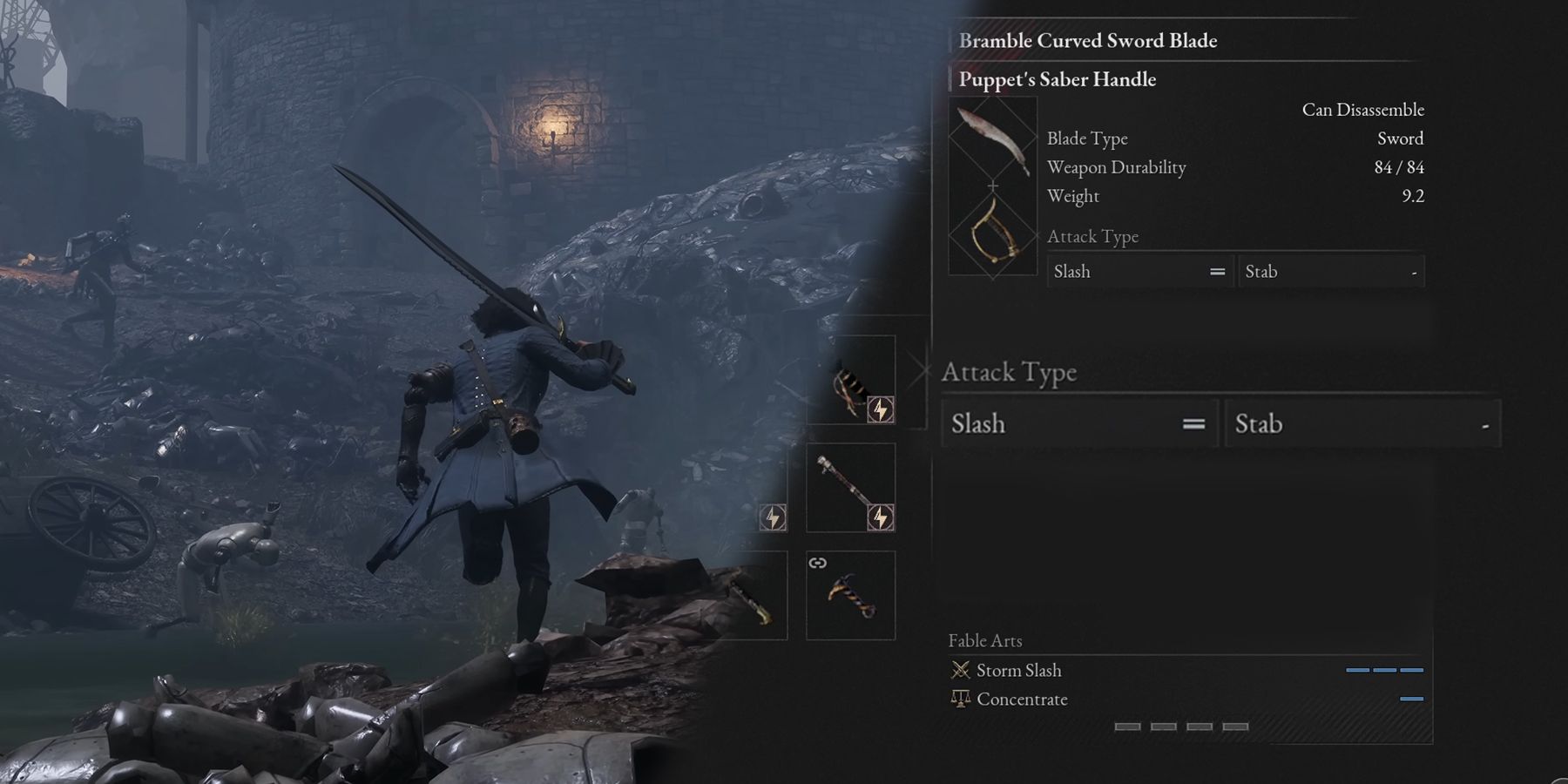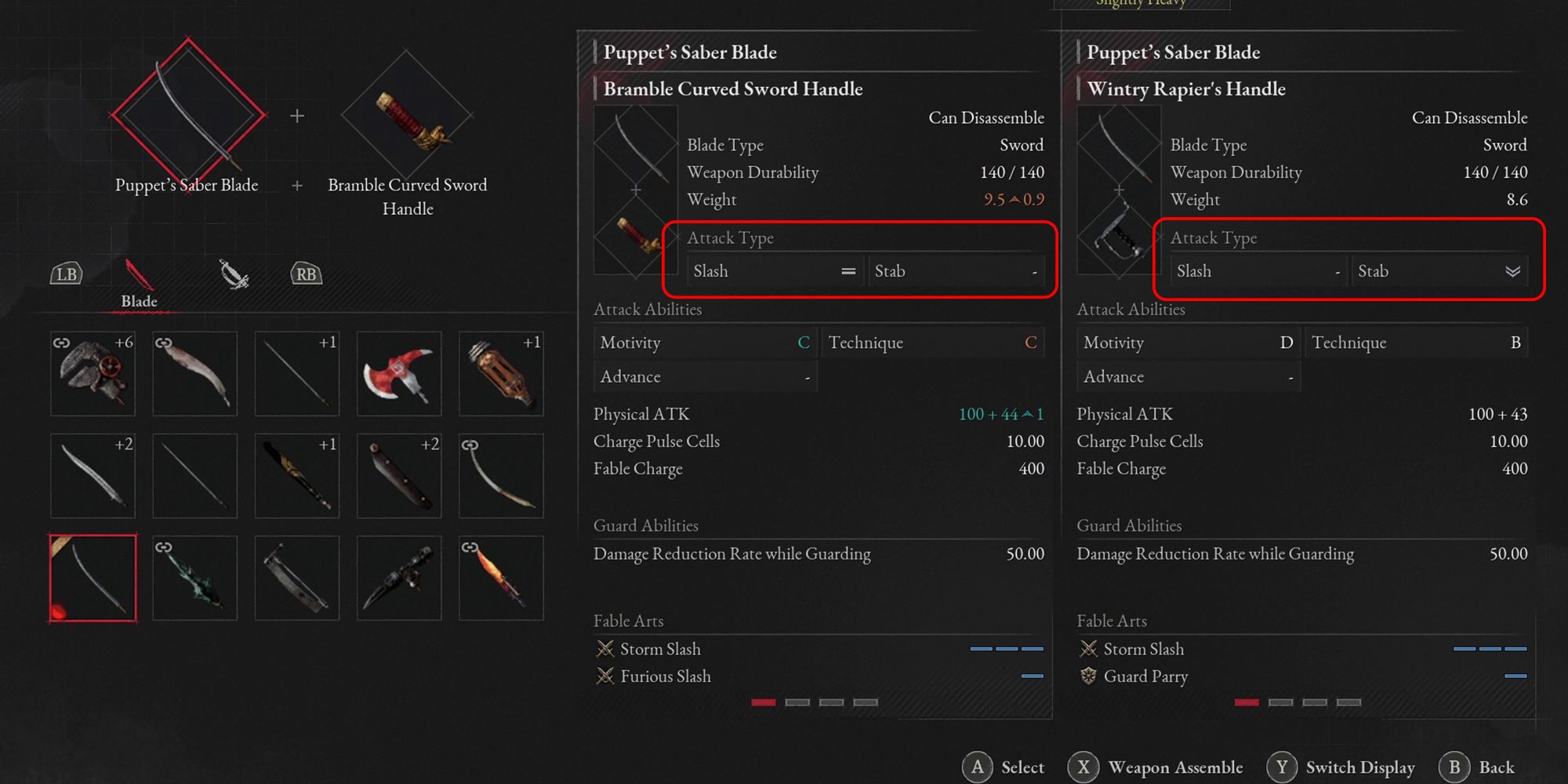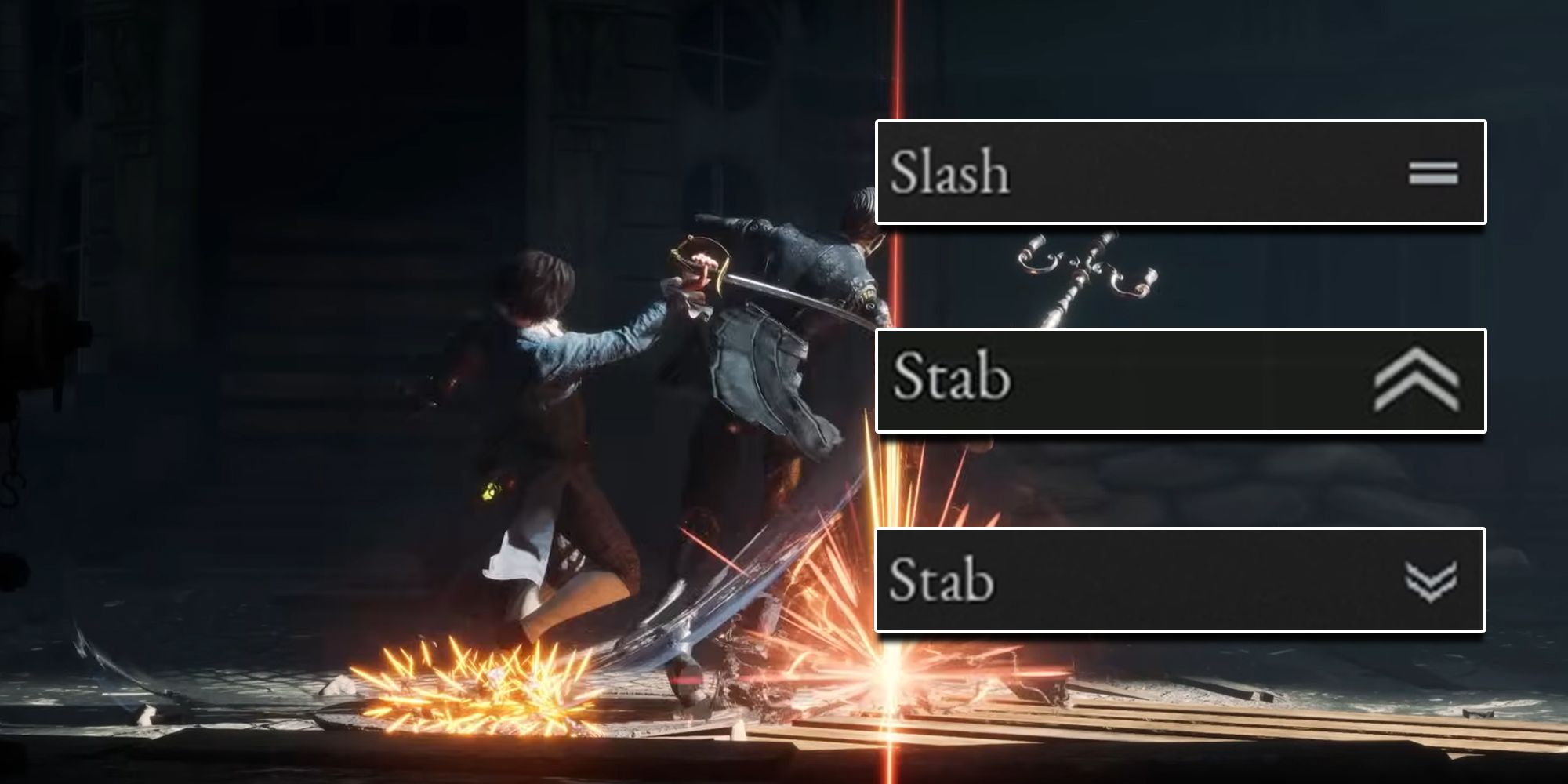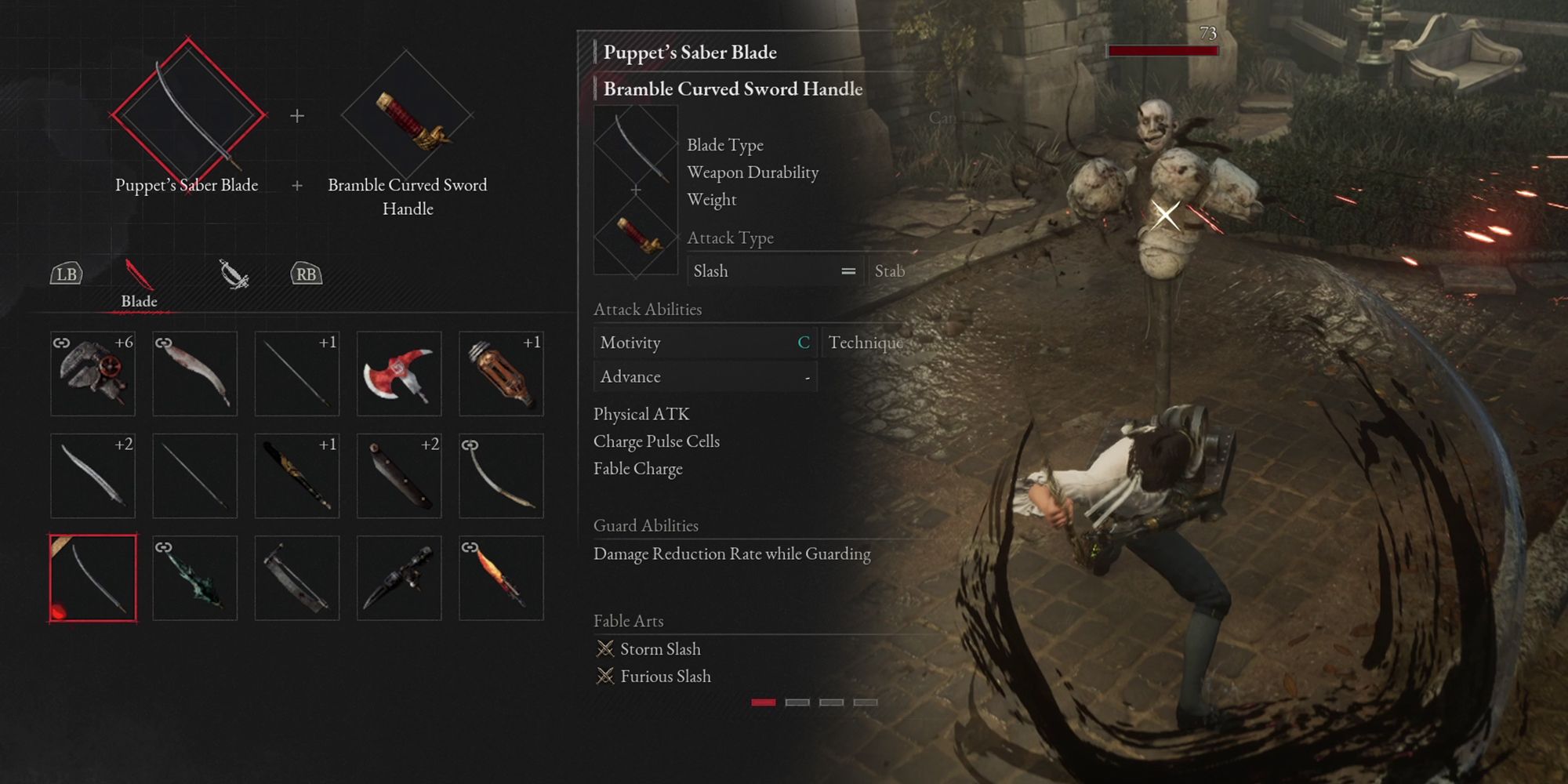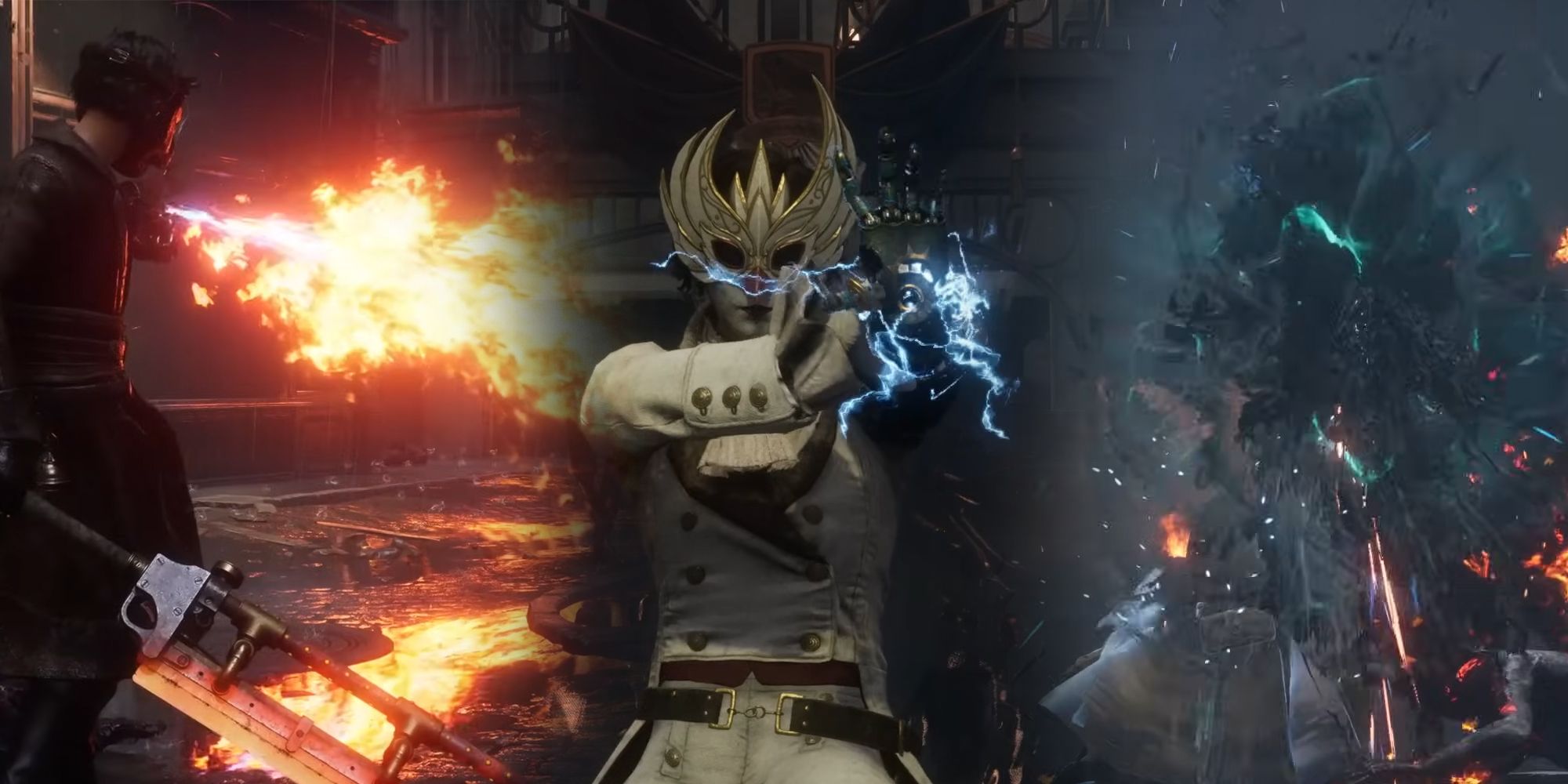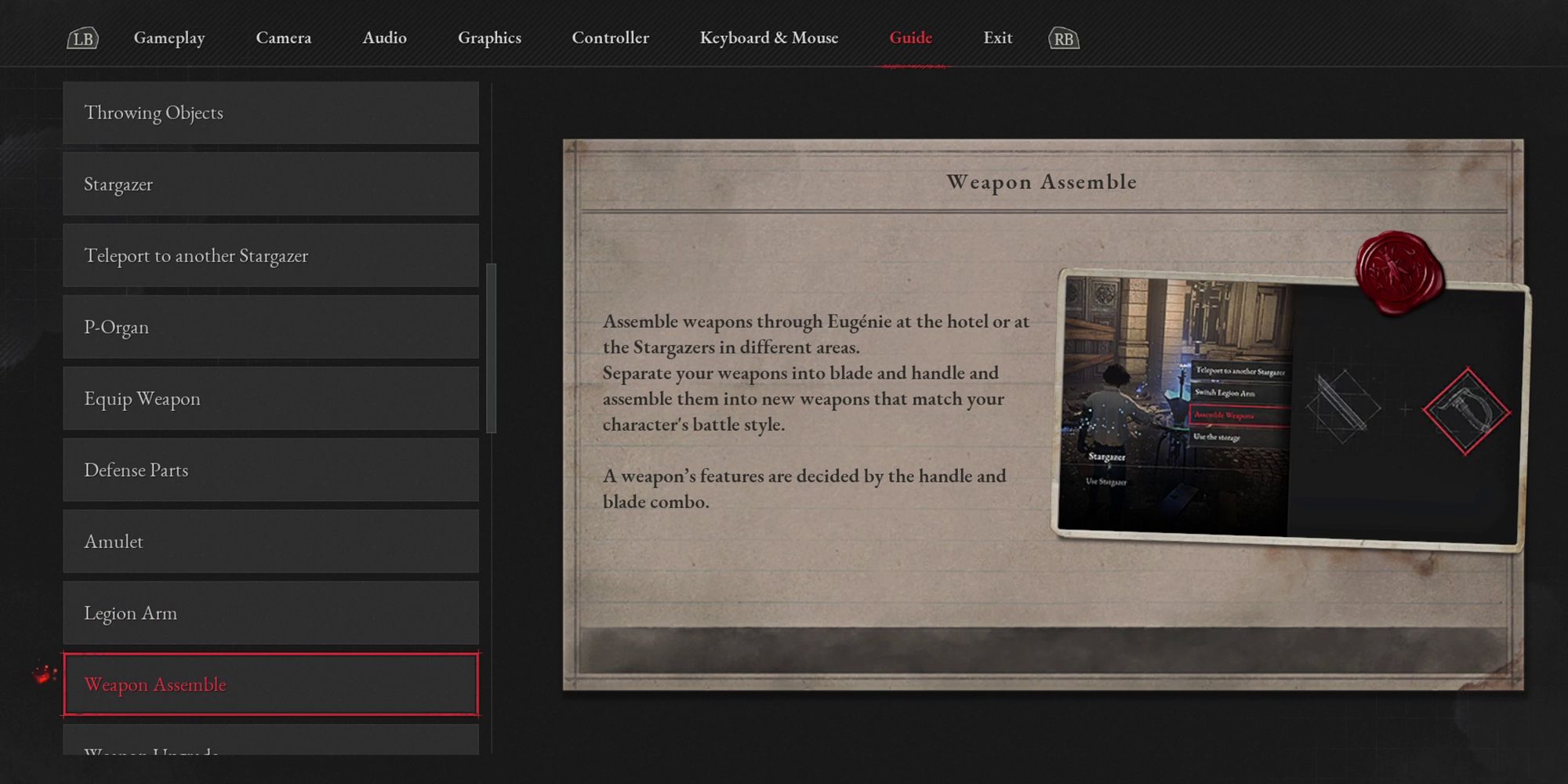While Lies of P has a lot of great things going for it, the lack of clarity regarding some aspects of gameplay and some oddly phrased in-game descriptions could use some improvement. For example, the Attack Type stat that's on every weapon blade in the game is so minimal in how it's portrayed to the player that most don't even really understand how it works. For example, a lot of players first thought this somehow either dictated what type of attacking animations their weapons would have or the only type of damage that weapon would deal. While both of these assumptions are on the right track, they're not entirely correct.
As it turns out, this stat matters a lot, and once players understand it, the Attack Type stat can make the Weapon Assembly system of Lies of P a lot more streamlined. So, let's go over exactly what this statistic means and how players can use it to determine the utility of their weapon of choice.
Attack Type Overview
To put it in the simplest terms possible, the Attack Type stat simply lets players know the 'type' of damage their Weapon will inflict. While looking at the Attack Types of individual handles and blades is important, it truly matters most when the player is looking at the Attack Type of a weapon and blade combined. In Lies of P, there are three possible Damage Types (excluding Elemental damage) Pierce, Slash, and Blunt.
Players can figure this out due to the different types of 'Liner' equipment they'll get throughout the game that gives them different resistances to these three Damage Types. This is probably confusing for a lot of players, as why would the Attack Type only have Stab and Slash while the actual in-game Damage Types are Pierce, Slash, and Blunt? Well, to be frank, it is confusing. But, in essence, the Attack Type stat both lets players know (on average) what type of attack animations this combined weapon will have as well as the primary Damage Type it will output. For example, a Rapier has a '=' in Stab, meaning most of its attack animations will have the protagonist Pinocchio 'stabbing' in some way rather than slamming the weapon or swinging it around like a typical sword. This won't be true 100 percent of the time, as a few weapons with the '=' in Stab will still have slashing-type animations, but in general, it is a reliable pattern for players to use to stick to their preferred Combat Style.
Different Attack Type Icons
On the stats screen for a handle or combined Weapon, players will see the different Attack Types labeled with different icons. The funny thing is, there's a large portion of Lies of P players that didn't even know there were different icons besides the dash icon and the equals icon. However, these icons dictate the amount of a certain damage type this weapon outputs (as well as the general animations its attacks have). These icons are:
Icon | Icon "Name" | Description |
|---|---|---|
- | Dash | Weapon has 0 attack that deals this type of damage. |
= | Equals | Weapon inflicts a 'Good' amount of this type of damage. |
^ | Up Arrows | Weapon inflicts a 'Great' amount of this type of damage. |
v | Down Arrows | Weapon inflicts a 'Poor' amount of this type of damage. |
For the most part, players can just use these as a way of figuring out what type of swings their weapon will have without having to test it every time. But, they're also a good way to determine if a blade or handle is being used to the absolute utmost. If a weapon has the down arrows on an Attack Type, the blade isn't going to be outputting the same amount of damage as it would be combined with a handle that has the equals or up arrow icon.
Good & Bad Combinations
Contrary to popular belief, there are technically 'incorrect' combinations with this game's Weapon Assembly system. This might be a downer to hear, as that means the game sort of punishes players for making wacky or absurd combinations. However, most Lies of P players won't need to worry about this, as a poor combination only affects the damage output by a bit. It won't make the weapon unusable and it doesn't 'ruin' the game if a player goes around swinging a Dagger with a giant wrench head for a blade.
An example of a 'Bad Combination' is putting something like the Wintry Rapier Blade on the Curved Greatsword Handle. The Handle is meant for a blade that's good at slashing, as said handle has an Equals icon in Slash. So, putting a Rapier blade on there, which has an Equals icon in Stab is going to mean the combined weapon will have very poor Slashing power.
However, alongside these bad combinations, there are also 'Great Combinations' where a player's weapon will be putting out the absolute maximum amount of damage possible. Typically these combinations aren't possible until players acquire some of the late-game weapons, as most of the early-game combinations won't add up to an up arrow icon in any category. This is all to say that the combination of a blade and handle can go both ways. A good pattern to keep in mind as players acquire weapons is:
Weapon Type | Typical Attack Type | Typical Damage Type |
|---|---|---|
Swords | Slash | Slash |
Greatswords | Slash | Slash |
Axes | Slash | Slash |
Daggers | Stab | Pierce |
Spears | Stab | Pierce |
Blunt | Slash | Strike |
Large Blunt | Slash | Strike |
Of course, this may not apply to every single combination players experiment with in Lies of P. But, as a general rule of thumb, it'll help players who like to mess around with the Weapon Assemble system often.
Specific Damage Types Against Specific Enemy Types
Another side of Lies of P that many people don't talk about is the fact that certain types of elemental damage do more against certain categories of enemies. It's something that the game actually incentivizes players to do with specific gear or weapons that can be found in certain areas. For example, players will recognize that a lot of Acidic consumables, throwable items, or weapons with innate Acidic damage are found in areas that are primarily filled with Carcass enemies.
Another example is the Electric Coil Stick, a weapon bought from the Wandering Merchant on Elysion Boulevard, a neighborhood entirely infested with only Puppets.
For some reason, there's not any in-game information that tells players whether certain Damage Types (Strike, Slash, Pierce) work better against certain enemies. However, following the same logic the game seems to be using, a lot of players have just innately used different Damage Types against different enemy types.
Elemental & Physical Weaknesses
To give a few examples of the in-game logic of Elemental Weaknesses and the assumed logic of Damage Type Weaknesses:
- Shock likely does more damage to Puppets as it 'short circuits' them, so it would make sense if Strike did more to Puppets since it breaks them apart.
- The undead (Carcass) are usually falling apart and 'soft' which is why they're typically weak to fire (and any slashing weapon) in most media. Plus, the Acid pools inLies of Pare flammable which is another clue.
- Humans are fragile creatures that can die from a simple stab to a vital organ to a splash of Acid, so it would stand to reason they would also be weak to Acid and Piercing damage.
Again, as far as the Damage Type Weaknesses are concerned, this isn't confirmed anywhere in-game but just seems to be a pattern some players have noticed. The Elemental Weaknesses, however, are absolutely confirmed, so at the very least players can take those as fact and use them to help out in overcoming specific bosses such as the King of Puppets.
Enemy Type | Elemental Weakness | Damage Type Weakness |
|---|---|---|
Puppet | Shock/Electric Blitz Damage | Strike |
Carcass | Fire Damage | Slash |
Human (Other) | Acid Damage | Pierce |
Lies of P is available now on PC, PS5, PS4, Xbox One, and Xbox Series X/S.




